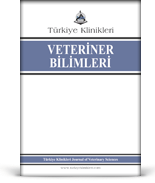Dünya Sağlık Örgütü tarafından 6 önemli tropikal hastalıktan biri olarak kabul edilen Leishmaniasis hastalığının yıllık ölüm oranının insanlarda yaklaşık olarak 57.000 civarında olduğu bildirilmektedir. Ayrıca, Leishmaniasis tedavisi ve kontrolü sırasında karşılaşılan zorluklar nedeni ile paraziter hastalıklar içinde sıtmadan sonra en önemli ikinci hastalık olarak ilinmektedir. Leishmania, hem insanları hem hayvanları etkileyen birçok türü olan Trypanosomatidae ailesine ait protozoon bir parazittir. Kutanöz ve mukokutanöz deri ülserlerinden ölümcül viseral formuna kadar değişen bir hastalık grubu olan Leishmaniasis, hem beşerî hem de veteriner alanda giderek daha sık gözlenen protozoal bir hastalıktır. Türkiye de dâhil olmak üzere Akdeniz havzasındaki çoğu ülkede yaygındır. Ülkemizde Leishmaniasis hastalığının şark çıbanı olarak da bilinen kutanöz Leishmaniasis ve viseral Leishmaniasis olmak üzere 2 klinik hâli görülmektedir. Leishmaniasis, genelde kendiliğinden de iyileşebilmesine rağmen zoonoz olduğundan ilaç ile tedavi edilmesi gerekmektedir. Allopürinol, Leishmaniasis tedavisinde kullanılan ilaçlardan biridir. Fakat allopürinol, bir ksantin oksidaz inhibitörü olarak davranır ve nükleik asitler ile serbest pürin nükleotidlerinden ürik aside kadar giden metabolik yolda ksantin miktarının artmasına neden olur. Bu nedenle, genetik problemlerin dışında tedavi amacıyla kullanılan allopürinol, uzun süreli kullanımı sonucu yan etki olarak ksantin taşlarının oluşmasına yol açar. Bu derlemedeki amacımız, ksantin taşlarının oluşum mekanizmasını ve Leishmaniasis tedavisinde kullanılan allopürinolün ksantin taşları üzerine etkilerini araştırmaktır.
Anahtar Kelimeler: Leishmaniasis; allopürinol; ksantin
The annual mortality rate of Leishmaniasis, which is considered to be one of six major tropical diseases by World Health Organization, is reported that be around 57.000 in humans. It is also known as the second most important disease after malaria in parasitic diseases due to difficulties encountered during the treatment and control of Leishmaniasis. Leishmania is a protozoon parasite belonging to the family of Trypanosomatidae, which has many species that affect both humans and animals. Leishmaniasis, a disease group that varies from cutaneous and mucocutaneous skin ulcers to fatal visceral form, is a protozoal disease that is increasingly observed in both human and veterinary fields. It is widespread in most countries in Mediterranean basin, including Turkey. There are two clinical forms of Leishmaniasis observed in our country, which is cutaneous Leishmaniasis also known as oriental sore, and visceral Leishmaniasis. Although the Leishmaniasis is generally self-healing, it must be treated with medication as it is zoonotic. Allopurinol is one of drugs that used in treatment of Leishmaniasis. However, it acts as a xanthine oxidase inhibitor and causes an increase in the amount of xanthine in metabolic pathway reached up from nucleic acids and free purine nucleotide to uric acid. Therefore, allopurinol used for treatment leads to the formation of xanthine stones as a side effect due to long-term use of it except for genetic problems. In this review, our aim is to investigate the formation mechanism of xanthine stones and the effect of allopurinol used in Leishmaniasis therapy on xanthine stones.
Keywords: Leishmaniasis; allopurinol; xanthine
- www.who.int. Ziyaret tarihi: 18.04.2018.
- Gurel MS, Yesilova Y, Olgen MK, Ozbel Y. [Cutaneous Leishmaniasis in Turkey]. Turkiye Parazitol Derg. 2012;36(2):121-9. [Crossref] [PubMed]
- Ertabaklar H, Ozkan TA, Ozensoy S, Ozbel Y, Babur C, Esen B, et al. [Examination of visceral leishmaniasis in children in Corum]. Turkiye Parazitol Derg. 2003;27(4):233-6.
- Toz OS, Korkmaz M, Balcioglu IC, Ozbel Y, Ertabaklar H, Rastgeldi S. [Zoonotic visceral leishmaniasis in Karaburun and Urla region]. Turkiye Parazitol Derg. 2002;26(3):234-8.
- Ashutosh, Sander S, Goyal N. Molecular mechanisms of antimony resistance in Leishmania. J Med Microbiol. 2007;56:143-53. [Crossref] [PubMed]
- Tait A, Sacks DL. The cell biology of parasite invasion and survival. Parasitol Today. 1988;4(8):228-34. [Crossref]
- Ates F, Or M, Korpinar MA, Gonul R, Bahceci T. [Use of antimony compounds in treatment of Leishmaniasis]. YYU Vet Fak Derg. 2011;22(1):53-7.
- Srivastava P, Dayama A, Mehrotra S, Sundar S. Diagnosis of visceral leishmaniasis. Trans R Soc Trop Med Hyg. 2011;105(1):1-6. [Crossref] [PubMed] [PMC]
- Pearson RD, Sousa ADQ, Jeromino SMB. Leishmania species: visceral (kalaazar), cutaneous and mucosal leishmaniasis. In: Mandell GL, Bennett JE, Dolin R, eds. Mandell, Douglas and Bennett's Principles and Practice of Infectious Diseases. 5th ed. Philadelphia: Churchill Livingstone; 2000. p.2831-44.
- Harman M. [Cutaneous Leishmaniasis]. Turk J Dermatol. 2015;9(4):168-76. [Crossref]
- Aslantas O, Ozdemir V, Kilic S, Babur C. Seroepidemiology of leptospirosis, toxoplasmosis, and leishmaniosis among dogs in Ankara, Turkey. Vet Parasitol. 2005;129(3-4):187-91. [Crossref] [PubMed]
- Gonul R, Arun SS, Dodurka T, Handemir E. [Leishmania infantum in a dog: case report]. Turk J Vet Anim Sci. 2002;26:689-94.
- Narter F, Sarica K. [Biomolecular mechanism of urinary tract stone disease]. Endouroloji Bulteni. 2013;6:135-42. [Crossref]
- Cochat P, Pichault V, Bacchetta J, Dubourg L, Sabot JF, Saban C, et al. Nephrolithiasis related to inborn metabolic diseases. Pediatr Nephrol. 2010;25(3):415-24. [Crossref] [PubMed] [PMC]
- Akici N, Cakil A, Oner A. Classical xanthinuria: a rare cause of pediatric urolithiasis. Turk J Urol. 2013;39(4):274-6. [Crossref] [PubMed] [PMC]
- Pais VM Jr, Lowe G, Lallas CD, Preminger GM, Assimos DG. Xanthine urolithiasis. Urology. 2006;67(5):1084.e9-11. [Crossref] [PubMed]
- Plevraki K, Koutinas AF, Kaldrymidou H, Roumpies N, Papazoglou LG, Saridomichelakis MN, et al. Effects of allopurinol treatment on the progression of chronic nephritis in canine leishmaniasis (Leishmania infantum). J Vet Intern Med. 2006;20(2):228-33. [Crossref] [PubMed]
- Ferraro PM, Robertson W, Unwin R. Renal stone disease. Medicine. 2015;43(8):427-30. [Crossref]







.: Process List